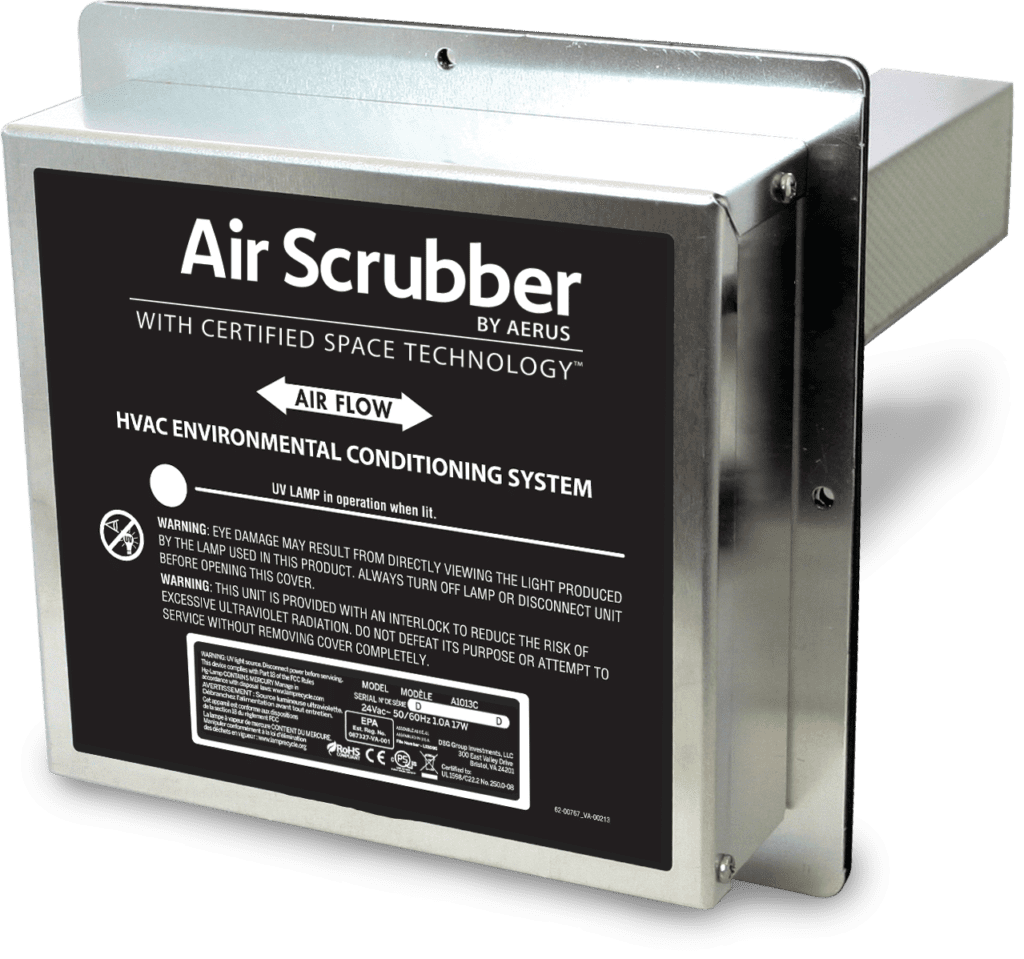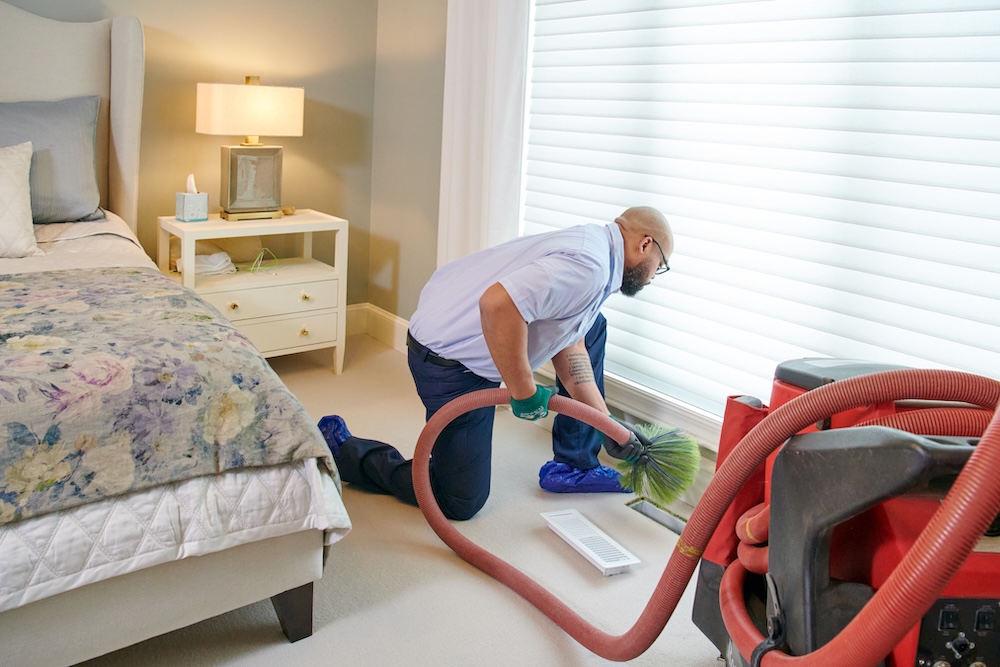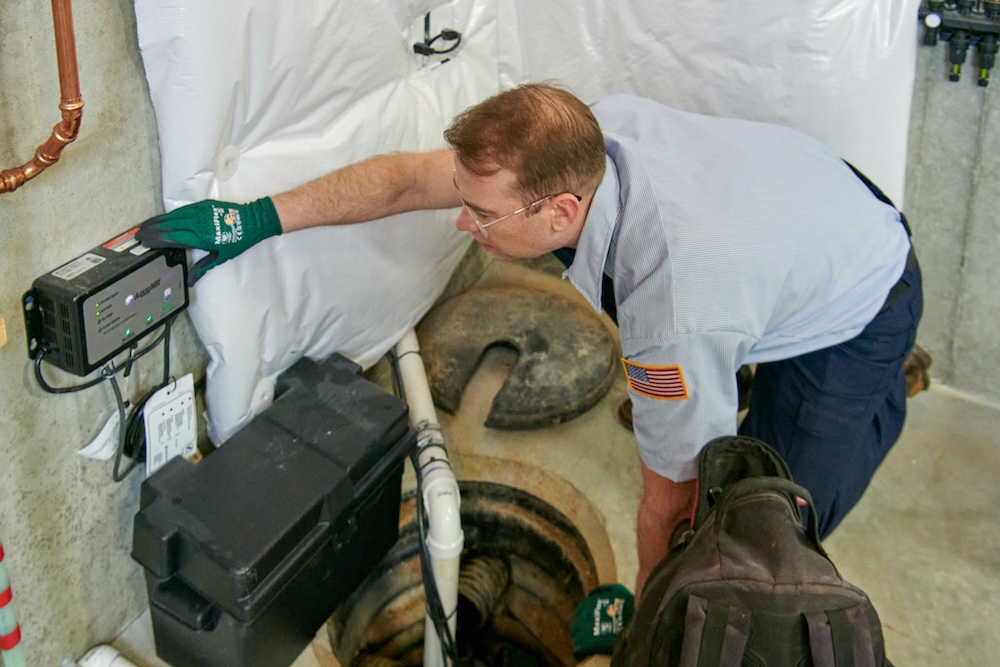BLOG
Coming to Blows with Your Runny Nose: How to Improve Indoor Air Quality & Reduce Allergens

Indoor air pollution is among the top five environmental threats to human health. Considering that most Americans spend 90 percent of their time indoors, this is a major concern. According to the Environmental Protection Agency (EPA), the levels of indoor air pollutants may be two to five times higher than the levels of pollutants outside. No wonder your eyes are itching!
Hidden Sources of Indoor Air Pollution
Moldy Houseplants and Basements
Wet conditions can cause mold to grow anywhere. Those with mold allergies should limit all sources of moisture in their homes.
Clutter
With clutter comes dust, and with dust comes allergens. It is easier to clean a home if it is not cluttered with items where dirt, dust and dander can hide.
Perfumes and Cleaning Products
Candles, personal care products and laundry detergents smell nice, but they wreck havoc with your air quality. The chemicals in these items are readily absorbed into your skin and lungs.
Steamy Showers
During a 10-minute bath or shower, you can absorb 100 times more chlorine than you do drinking a gallon of the same water. Without a filter and ventilation, that toxic chlorine becomes airborne and gases throughout your home.
Stored Paint Cans
Paint cans, even sealed ones, often leak airway-annihilating volatile organic compounds, aka VOCs.
Furniture and Flooring
Glues and binders are the culprit here. Pressed wood materials and glues binding carpet and flooring cause VOCs to flood your living space.
Carpeting
Dust and dander collect in carpet fibers, triggering asthma and allergy attacks. Carpets also give off VOCs.
Easy Solutions to Improve Indoor Air Quality
Filter Your Air
Look for air filters that handle particulate matter, such as dust and dander, as well as chemical matter. Central air cleaners, like the Anthony Clean Machine, that operate when your furnace fan is on work well. The best kinds of filters for people with allergies are high-efficiency particulate air (HEPA) filters, which are specially designed to remove allergens from the air.

Ionize Your Air
Ionic air cleaners generate an electrical charge (negative ions) that makes the pollutants in the air become ‘sticky’. The ions attach to airborne molecules, making them negatively charged and attractive to the positively charged particles nearby.
Ionic air cleaners are particularly effective at removing odors. They are also quiet, energy efficient and don’t require replacement filters. The Air Scrubber Plus® is an extremely efficient ionic air purification system.
Click here to learn about the new Air Scrubber Plus®space age technology.

Shed Some UV Light on the Issue
Ultra-violet (UV) lamps installed on your heating and cooling system are extremely effective at destroying pollutants like bacteria, mold and viruses. The UV rays "incinerate" particles as they pass through, making it easier to breathe for those with asthma, lung complications and allergies.
The effectiveness of the UV lamps is based on molecule's direct line of sight contact with the lamp and the proximity (closeness) the molecule has with the lamp.
Click here for more information on the different types of air cleaners.
Keep an Eye on Humidity
Dust mites and mold flourish in humid homes. A properly operating AC unit keep your home's humidity at an optimal 40%-60% relative humidity level, so giving your AC unit a yearly tune up is important.
Fixing leaky plumbing is critical, so moisture cannot escape from pipes and appliance hoses. Venting cooking smoke and clothes dryer exhaust is also important, to reduce humidity as well as particulates in the air.
Clean Your House, but with Environmentally Safe Products
To minimize the chemicals being released into your home, avoid cleaning products, beauty products, air fresheners and candles with synthetic chemicals and bleaches. Stick with fragrance-free/naturally-scented products, use mild cleaners, cut out aerosol sprays, open windows to let in fresh air, bring plants into your home (if you do not have mold allergies) and use lemons, beeswax candles and baking soda to create a fresh scent.
Don't Smoke!
Secondhand smoke contains 4,000 chemicals that can cause cancer, asthma, respiratory infections and allergies. Smoke outside or not at all.
Test for Radon
Radon is a dangerous radioactive gas that is formed from the natural decay of uranium found in soil, and it enters your home through cracks in the foundation.
There’s also a correlation between granite countertops and increased radon levels. Radon is colorless and odorless so you must use a radon testing kit to know if it has invaded your home.
Click here for more information on indoor pollutants, air cleaners, radon, and how contaminants affect your health.
Get a Filter on Your Shower
Your water probably contains chlorine to kill bacteria and viruses. But chlorine's power to kill pathogens comes at a cost; it dries out your skin and hair, it's potentially toxic and studies have linked it to chlorine in steamy showers to cancer.
Chlorine filters can be added cheaply and easily to your shower fixture. But don't forget to filter your drinking water, as drinking chlorine is as bad as breathing it.
Landscape Appropriately
Get rid of any weeds growing right next to your house; they are just another source of pollen and allergens. If you have pollen allergies, ask someone else to do the weeding. Also, avoid planting flowers that are relatives of ragweed—mums, sunflowers, dahlias, and zinnias.
Contact a Professional to Tune Up Your AC, Check Your Plumbing, and Install Air Cleaners
While there is a lot you can do by yourself to improve your home's indoor air quality, it is best to contact HVAC professionals to keep AC units in top working order, and to install whole house air cleaners and UV lamps. Contact us for advice and free estimates on systems and services that fit your budget and needs.






